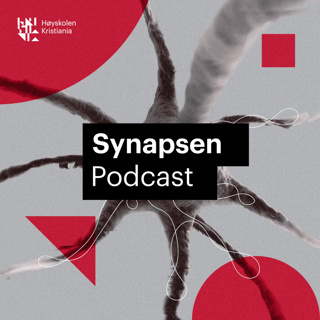
Hurricane Helene: Impact Erwin Tennessee
Meteorology Matters looks at a Washington Post investigation into the deaths of six Impact Plastics employees during Hurricane Helene's flooding in Erwin, Tennessee. The investigation highlights the role of both the severe weather and allegedly inadequate employer responses in the fatalities, contrasting this with the successful rescue of hospital staff and patients. We also examine the deaths of workers at an Amazon warehouse and a Kentucky candle factory during a tornado. The lack of union representation contributed to the workers' inability to leave their workplaces before the disaster and emphasizes the importance of unions in ensuring worker safety and fair treatment. This boils down to the tragic consequences of prioritizing profit over worker safety in the face of extreme weather events.
3 Des 202411min

Lake Effect: 6 Feet of Snow Forecast for Watertown, NY
Meteorology Matters reports on a major Thanksgiving Weekend lake-effect snowstorm impacting upstate New York and parts of the Great Lakes region. Significant snowfall accumulations of up to five or six feet are predicted, especially near Watertown, NY, and along the shores of Lakes Erie and Ontario. Hazardous travel conditions and widespread disruptions are anticipated, prompting warnings and travel restrictions. State and local authorities are mobilizing resources, including the National Guard and transportation crews, to respond to the storm's impact. The storm is expected to last through early Monday.
29 Nov 202411min

Gust vs Sustained Wind: Application to Building Standards
Meteorology Matters presents an analytical framework for standardizing tropical cyclone wind characteristics (mean wind speed, turbulence intensity, integral scale, gust factor, and peak factor) from various measurement conditions to a common reference. This framework uses equilibrium boundary-layer theory and is applied to data from seven tropical cyclones (four typhoons, three hurricanes), comparing results to existing standards (ASCE 7-10 and AIJ-RLB-2004). We continue to. examine gust factor variations based on coastal tower measurements during three landfalling typhoons. We explore the relationships between gust factor and turbulence intensity, height, wind speed, and direction, finding that gust factors are smaller than those in national codes and influenced significantly by shoreline confinement on sea wave development.
29 Nov 202410min

Thanksgiving Week Weather
Meteorology Matters discusses Thanksgiving week weather forecasts across the U.S., predicting potential travel disruptions. CBS News reports on severe storms impacting the Pacific Northwest and California, with ensuing power outages and fatalities, while also forecasting rain and snow in the East impacting Thanksgiving travel. Weather.com provides a more detailed, day-by-day forecast, highlighting potential travel issues due to snow in mountainous regions and lake-effect snow in the Great Lakes area, along with rain and thunderstorms in other parts of the country. The overall message is one of caution and preparedness for holiday travel.
28 Nov 202413min

Deadlines Loom for FEMA Hurricane Disaster Assistance, Unemployment, and Appeals
Meteorology Matters provides details onthe Disaster Unemployment Assistance (DUA) and Federal Emergency Management Agency (FEMA) aid available to Florida residents affected by Hurricanes Helene and Milton. We explain how to apply for FEMA assistance and appeal denials, highlighting challenges faced by applicants. We also focus on DUA application procedures, deadlines, and eligibility requirements for individuals whose employment was impacted by the hurricanes. We go over supplemental information on DUA, including eligibility criteria, application methods, and appeal processes, emphasizing the importance of meeting deadlines and providing necessary documentation. We aim to inform and guide individuals seeking aid after the hurricanes before time runs out!
25 Nov 202416min

What a Second Trump Term Means for Science
People express concern over the potential impact of a second Trump presidency on US science policy. They highlight anxieties regarding potential budget cuts to scientific research, increased focus on research security potentially hindering international collaboration, and a diminished respect for scientific consensus in policy decisions, particularly concerning climate change and public health. The appointment of Robert F. Kennedy Jr. to a key position is cited as a cause for alarm due to his controversial views on public health. Finally, there are discussions of proactive strategies for the scientific community to engage with the new administration and advocate for continued funding and the preservation of independent scientific agencies.
25 Nov 202416min

Climate Change Supercharged Hurricane Season 2024
Meteorology Matters looks at how Climate change significantly intensified the 2024 Atlantic hurricane season. Multiple reports, including one from Climate Central and a peer-reviewed study in Environmental Research: Climate, confirm that human-caused ocean warming increased the wind speeds of all eleven hurricanes. This resulted in seven hurricanes being upgraded to higher Saffir-Simpson categories and two tropical storms becoming hurricanes. The increased intensity led to substantial damage and economic losses, with climate change attributed to a significant portion of the damage caused by Hurricanes Helene and Milton. A separate analysis by a hurricane expert highlights the unusually active 2024 season, noting record-breaking ocean temperatures and the occurrence of three simultaneous hurricanes in October.
23 Nov 202418min

November Florida Hurricanes & Potential Sara
A potential tropical storm, dubbed Invest 99L, is forming in the Caribbean and has a high chance of developing into Tropical Storm Sara within the next few days.Multiple weather models are forecasting Sara to potentially become a hurricane and threaten Florida's Gulf Coast next week, although the track and intensity of the storm remain uncertain. MeteorologyMatters discusses the rarity of November hurricanes, with only three recorded landfalls in the US since 1850, but warn that warm water temperatures in the Atlantic basin are fueling an unusually active hurricane season.
13 Nov 202417min





















